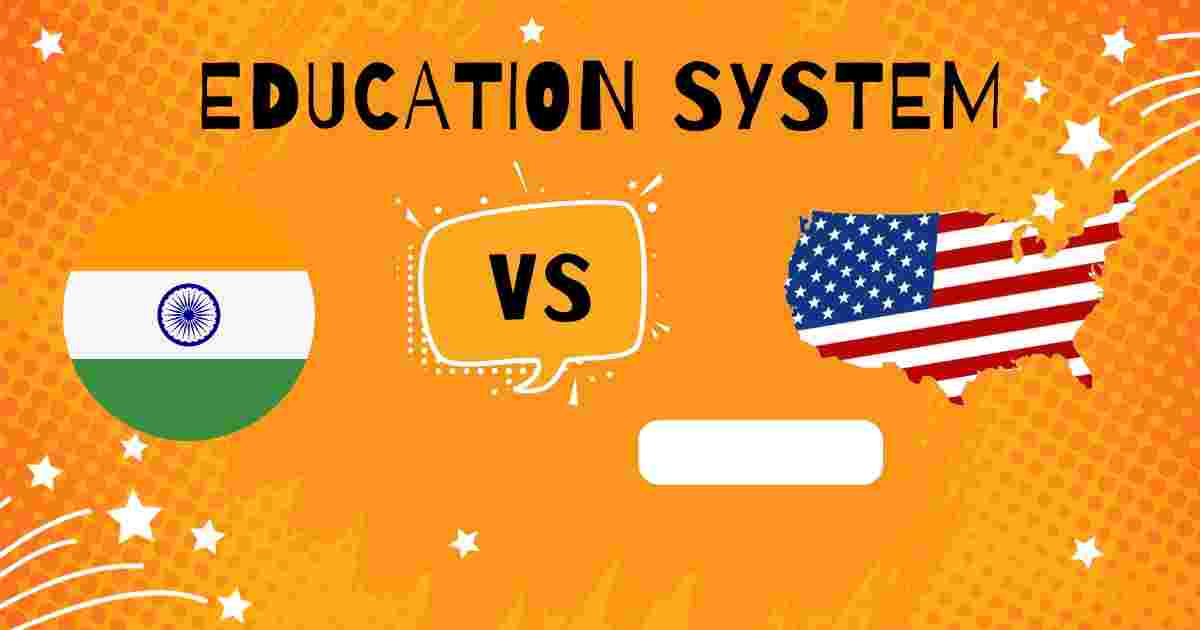A Comparative Analysis of the Education Systems in India and the USA

Introduction:
Education stands as the bedrock of societal advancement, molding the skills, knowledge, and outlook of future generations. India and the USA, two populous and diverse nations, exhibit distinctive approaches to education. In this blog post, we embark on a comparative journey through the education systems of India and the USA, shedding light on their merits, hurdles, and fundamental disparities.
- Structure and Levels:
India: The Indian education system encompasses three primary tiers: primary education (ages 6-14), secondary education (ages 14-18), and higher education (undergraduate and postgraduate levels). Curriculum guidelines are established by both central and state boards, leading to variations in content and assessment methodologies.
USA: The American education system is structured around three fundamental stages: elementary school (grades K-5), middle school (grades 6-8), and high school (grades 9-12). Beyond high school, students have the option to pursue further education at colleges, universities, or vocational institutions.
- Curriculum and Specialization:
India: India's curriculum places emphasis on a diverse array of subjects, ranging from mathematics and science to social studies and languages. Specialization primarily occurs at the undergraduate level, with a burgeoning trend towards interdisciplinary studies.
USA: In the USA, students enjoy greater latitude in selecting their courses, enabling early specialization. This system fosters a balanced education while affording opportunities for in-depth study in specific areas.
- Teaching Methods:
India: Traditional teaching methods, including rote memorization, have been predominant in India. However, there's a discernible shift towards experiential and student-centered learning, particularly in private schools adopting progressive pedagogies.
Traditional Methods:
Lecture-Based: Engages students through one-way communication, efficiently delivering content.
Rote Memorization: Emphasizes repetition for subjects like history, vocabulary, and basic math.
Experiential Learning:
Hands-On Activities: Encourages active participation and practical application of theoretical knowledge.
Problem-Solving Tasks: Challenges students to solve real-world problems, promoting critical thinking, creativity, and analytical skills.
Collaborative Learning:
Group Work: Involves students working together on tasks or projects. It fosters teamwork, communication, and peer learning.
Discussions and Debates: Encourages active participation in class discussions, allowing students to exchange ideas, express opinions, and learn from each other.
Inquiry-Based Learning:
Question-Driven Approach: Focuses on asking questions to stimulate curiosity, research, and exploration.
Promotes Critical Thinking: Challenges students to analyze and draw conclusions.
Technology-Enhanced Learning:
Digital Resources: Uses technology like computers, tablets, and software for content delivery and engagement.
Online Platforms: Utilizes platforms for assignments, assessments, and interactive content.
USA: The American education system places a greater emphasis on critical thinking, creativity, and problem-solving. Inquiry-based learning and group projects are commonly used to foster these skills.
Traditional Methods:
Lecture-Based: Common for efficient content delivery, but often supplemented with other methods.
Socratic Method: Encourages critical thinking through guided questioning and discussion.
Experiential Learning:
Hands-On Activities: Encourages active participation and application of knowledge in practical settings.
Field Trips and Workshops: Provide real-world exposure to complement theoretical learning.
Project-Based Learning:
Long-Term Projects: Students engage in extended projects to explore and apply knowledge on a particular topic.
Collaborative Learning:
Group Work: Commonly used for problem-solving tasks and projects, promoting teamwork and diverse perspectives.
Blended Learning:
Combines In-Person and Online Learning: Integrates technology for flexible content delivery and interaction.
Allows Individual Pacing: Students can progress at their own pace.
- Standardized Testing:
India: The Indian education system heavily relies on standardized tests for assessments, such as the Central Board of Secondary Education (CBSE) exams and various state board exams. These results significantly influence academic progression.
USA: While standardized testing like the SAT and ACT are prevalent for college admissions, there's a growing shift away from over-reliance on these scores. Many universities now adopt a holistic approach, considering essays, extracurricular activities, and letters of recommendation.
- Accessibility and Affordability:
Accessibility:
Accessibility in education pertains to the ease with which individuals can access and participate in educational opportunities. It encompasses factors such as:
Geographical Proximity: Convenient accessibility to educational institutions, especially for remote or underserved areas.
Physical Accessibility: Provision of facilities that accommodate individuals with disabilities.
Economic Accessibility: Affordability of associated costs, including tuition fees, transportation, and learning materials.
Inclusive Policies: Policies ensuring equal access to education for marginalized groups, such as low-income individuals or those with disabilities.
Affordability:
Affordability, a critical aspect of accessibility, focuses on the financial aspects of obtaining an education:
Tuition and Fees: Are the costs within the means of the population, especially for lower-income individuals or families?
Scholarships and Financial Aid: Mechanisms in place to support those who may struggle with educational expenses.
Hidden Costs: Consideration of additional expenses like textbooks, materials, transportation, and accommodation.
Income Disparities: Acknowledgment of economic diversity among the student population, with policies to address potential barriers.
India: India grapples with challenges in providing quality education for all due to its vast population and economic disparities. While public schools exist, private institutions often offer higher-quality education albeit at a cost.
USA: The American education system combines public and private institutions. Public education is funded through taxes and tends to be more accessible, while private education can be costly but often provides additional resources and opportunities.
Conclusion:
India and the USA each present distinct strengths and challenges within their education systems. While India places emphasis on a robust foundational education and boasts a rich cultural heritage, the USA champions innovation, critical thinking, and early specialization. Appreciating the nuances of each system allows us to recognize the diversity in global educational approaches, inspiring continuous efforts towards improvement.
